#Paddy Daly
Explore tagged Tumblr posts
Text
#OTD in 1923 – Nine Republican prisoners are taken from Ballymullen Barracks in Tralee to Ballyseedy Cross, ostensibly to clear a mined road.
Kerry had seen more violence in the guerrilla phase of the Civil war than almost anywhere else in Ireland. By March 1923, sixty-eight Free State soldiers had already been killed in Kerry and 157 wounded. Eighty-five would die there by the end of the war. The day after Five Free State soldiers were killed by a booby trap bomb while searching a republican dug out at the village of Knocknagoshel,…
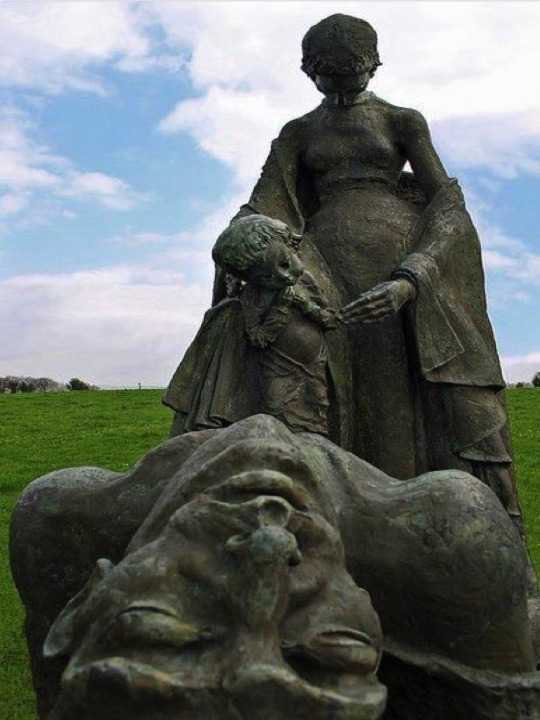
View On WordPress
#(Yann Goulet#Ballyseedy Massacre#Ballyseedy Monument#Co. Kerry#Free State Soldiers#Guerilla warfare#Ireland#Irish Civil War#Irish History#Knocknagashel#Land mines#Paddy Daly#Republicans#Sculpter)#Tralee
9 notes
·
View notes
Text
Fistula Film
Fistula
This short film has been made to raise awareness, reduce stigma about fistula, and highlight the devastating impact fistula has on women who live with this condition. The goal is to make life better and safer for women giving birth and to prevent fistula from happening in the first place. The film is a call to action to improve access to maternal care including quality, safe, timely, and affordable surgical, obstetric, and anesthesia care—and promote safe motherhood for all.
What is Fistula ? Obstetric fistula is a devastating childbirth injury in which an abnormal opening forms between a woman’s bladder and vagina or between the rectum and the vagina as a result of prolonged obstructed labor, resulting in continuous urinary or stool leakage. This condition is rare in high-income countries due to readily available obstetric care, while it continues to plague women in low resource settings. Estimates suggest that at least 2 million women have unrepaired obstetric fistula in low-income countries.
Goal The goal of this film is to enhance public, national, and international awareness, raising the priority of women’s reproductive health for low resource countries, expanding access to emergency obstetric and surgical services, and supporting holistic and high-quality obstetric fistula care for all who need it. The film is particularly timely given recent WHO data in 2023 showing that maternal deaths have increased or stagnated in nearly all regions of the world in the last 20 years, and continued staggering gaps in access to surgical, obstetric, and anesthesia care.
The film will also decrease the stigma imposed on women living with fistula through awareness. Finally, with increasing migration of women to high resource countries due to global instability from conflict, climate change, pandemic etc, it is critical that the medical community in high resource countries is educated and prepared to care for these women.
There is are 2 versions ((7min and 2min)
There is are 2 versions (7min and 2min)
vimeo
vimeo
Directed : Dearbhla Glynn Produced : Paddy Daly DOP : Paddy Jordan Executive Producer : Dr Rahel Nardos Editor : Cara Holmes Additional Editor : Michael Higgins Offline / Online Editor : Michael Higgins Founder Terrewoode and Executive Director: Alice Emasu Seruyange Medical Director Terrewoode : Mary Aono Programs Manager Terrewoode : Martha Ibeno HR/Admin Manager Terrewoode : Monica Opus Finance Manager Terrewoode : Lutie Kobusinge Uganda FIxer and Sound operator : Kisakye David Bel-lion Translation: Stella Apio and Alvine Nanyange Driver: Jafali Peirre Music : The Blaze Aidan Kavanagh
Funding support Maternal Health Fund https://maternalhealthfund.org/
University of Minnesota, Center for Global Health and Social Responsibility https://globalhealthcenter.umn.edu/global-womens-health
Global Women’s Initiative https://gwhi.org/
Advocacy Partners The Global Alliance for Surgical, Obstetric, Trauma, and Anaesthesia Care (G4 Alliance) https://www.theg4alliance.org/
Film Hosts Terrewode Women’s Community Hospital https://terrewode.org/ Director of Global Women's Health, Center for Global Health and Social Responsibility, University of Minnesota. Dr Rahel Nardos
Special Thanks Asalo Rose Isiangu lois Center for Global Health and Social Responsibility team at the University of Minnesota Terrewode Women’s Community Hospital Management The patients who shared their stories The G4 Alliance Joseph Kinihan Alice Emasu Nigel Rossiter & In Memory of Steven J Sockolov
#ireland#uganda#film#fistula#the blaze#producers#fixers#shoot#terrewode#The Global Alliance for Surgical#Obstetric#Trauma#and Anaesthesia Care (G4 Alliance)#Maternal Health Fund#Vimeo
0 notes
Link
https://www.daoiri.com/
https://www.facebook.com/DaoiriFarrell
https://daoirifarrell1.bandcamp.com/
https://open.spotify.com/album/0tfffdU9asMvxBn0z67gtj
1 note
·
View note
Photo
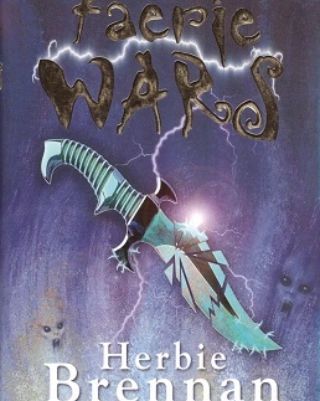
Happy Paddy's Day! Here's to some of my fellow Irish authors: Herbie Brennan, Elizabeth Daly and Oscar Wilde . . . . . #paddysday #irishauthors #bookstagram #books https://www.instagram.com/p/Cp5I4gtI27F/?igshid=NGJjMDIxMWI=
0 notes
Text
Ballyseedy
Nine men were taken from a cellAnd marched off in a lineThem all tidy in a circleAround a big land mine Paddy Daly was in chargePaddy Delany the fuse did lightAnd blew them into smithereensOn a lonely Road that night He crawled into a riverAnd there he had to stayUntil at last the coast was clearAnd then Steven crawled away So one man did survive the blastOf the nine men taken from jailAnd…
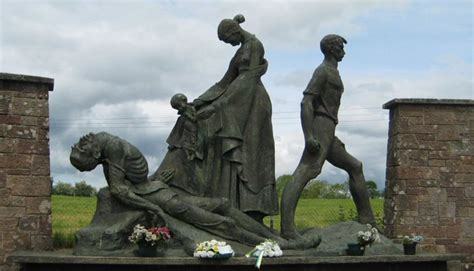
View On WordPress
1 note
·
View note
Text
Coming Out in the Wash
Coming Out in the Wash

MY BEAUTIFUL LAUNDRETTE
The REP, Birmingham, Thursday 7th November, 2019
The ground-breaking film from 1985 comes to the stage in this adaptation of his own screenplay by Hanif Kureishi. It’s a story of personal identity versus culture, of being yourself at the expense of fitting in, or surrendering to tradition and expectation at the expense of happiness and fulfilment.
It’s a stylish…
View On WordPress
#Cathy Tyson#Gordon Warnecke#Hanif Kureishi#Jonny Fines#Kammy Darweish#My Beautiful Laundrette#Nicole Jebeli#Omar Malik#Paddy Daly#Pet Shop Boys#review#The REP Birmingham
1 note
·
View note
Text
OK BIG THANKS to @agntnromanoff for answering Anon’s call and posting that 2019 Tracy interview from Last Call with Carson Daly.
-> Tracy Spiridakos on Last Call with Carson Daly (2019) <-
#tracy spiridakos#interview#carson daly#last call with carson daly#i think it is safe to assume jesse now swears in greek#probably marina paddy and laroyce too#chicago pd#answer#video
20 notes
·
View notes
Text
Let’s shut up and appreciate Patrick Gibson being in our lives
#patrick gibson#paddy gibson#i still hate clancy but oh well#the darkest minds#never fade#clancy gray#liam stewart#the oa#ruby daly#amandla stenberg#date night with lee and clance
15 notes
·
View notes
Video
tumblr
a hearty dose of Dali-esque surrealism for your St Paddy’s Day festivities with animation by Phil Monroe, Lloyd Vaughan, and Ken Harris at the end
#there are a lot of really fun Maltese-isms in the dialogue for this cartoon#take your pick of 'you picturesque peasant caretaker of the old sod you' or#'now isn't this sight enough enough to set the heart crossways in ye?'#i've noticed... oh geez idk if it's exclusive to Maltese/Jones (i think so) but Porky often says 'you __________ you' in these shorts#lt#may very well be a Maltese-ism i wish i could think of examples but Trust Me#wearing of the grin#jones#vid
138 notes
·
View notes
Text
Forgotten and Overlooked Cartoon Movies
On this week’s discussion we will explore two cartoon movies that you either may have watched when you were a child and got you disturbed giving you nightmares or you watched as an adult but probably had the same reaction as if you were a little kid. Or maybe it was just me who felt very confused watching it. This brings to my mind a thought. Are cartoons/ animation movies strictly designed for a young audience? Can a cartoon that is designed for children bring themes that may bring valuable discussions at home and teach good lessons to a little mind in development? Finding Nemo suggests to kids that step out of your comfort zone is important and to never give up even having so many obstacles on your life journey. Mulan is a great representation and inspiration for little girls to know that they can and should fight for their rights with confidence and independence. The list of animation movies that can be very inspiring for children is extensive. Although not all the cartoons/ animations movies have a young audience target. Titles such as “Fritz the Cat” (1972), “South Park” (1999) and the outstanding autobiographical “Persepolis” (2007) are definitely movies that probably wouldn’t be a good idea to have your child sitting next to you in the living room while you watch it.
Some movies sometimes either get forgotten or overlooked in the history of cartoon movies. Today we will give the attention necessary and deserved to two adult cartoon masterpieces; “Fantastic Planet” (1973) directed by Rene Laloux and “Watership Down” (1978) directed by Martin Rosen. Both movies are incredible on bringing to the table topics such as violence and power, authoritarian leaderships, division of social classes, democracy, the seek of home and belonging. We will cover that in a moment but excuse me on giving you some spoilers first. Both movies are modeled and gives to the audience historical lessons about specific times, events, and political aspects in society.
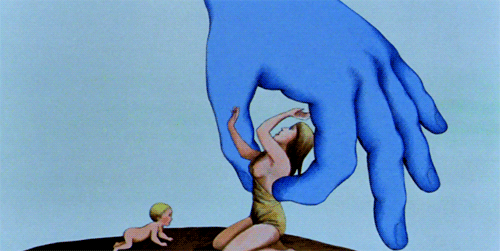
“Fantastic Planet” (1973) was a landmark in the history of European animation directed by Rene Laloux. The movie is a completely though-through science fiction vision which may be for many breathtaking or an unnecessarily experimental miserable detour. The movie resonates with historical allegories and radical politics based on European aesthetic principles. I personally find the aesthetic of this movie very surrealistic and resembles Salvador Dali’s artworks. The film takes place on the planet Ygam and shows two tribles of organisms that live against each other. The gigantic, intellectual, and blue Draags and the small and pinkish Oms that were removed by their masters Draags from their planet. The Oms are domesticated and enslaved by the Draags. The story unfolds and is narrated by Terr, one of the members of the Oms who grows and matures being domesticated next to the Draags. Terr learns about the culture of the Draags and their strange rituals of learning, meditation, wisdom, and development. Through mental inducement devices to transmit knowledge to future generations the Draags open the collective wisdom of their race. Terr escapes his captors and joins a renegade group of Oms. As the Draags try to control the radical Oms the film concludes in the final confrontation between the two groups and a satellite known as the Fantastic Planet.

In 1968 the film faced obstacles in the middle of its production. Soviet tanks invaded Prague, where the film was being produced, and occupied the city. After the invasion, the production of the film was extended for four years and was only released in 1973. In many ways the film represents these events. The communist occupation not only in Czechoslovakia but also in other Eastern European countries, is directly reminiscent of the convenient enslavement of the Oms by the Draags. In addition, the analogy of the relationship between owner and animal is effective between representing the relationship between the Soviet Union and its satellite states. While animals and Oms experienced modest degrees of autonomy, this was always monitored and limited by their masters. In both cases these masters maintained the fate of their servants. During that time, the illusion of this need was fabricated and often promoted to praise the positive attributes in the master. Besides that, the illusion of freedom has always been available at a distance, but it was collected in small doses. The masters reinforced and affirmed the hierarchical relationship that subordinates had with their servants. Two other elements are also symbolic of social and historical phenomena. Firstly,the tactics and techniques used by the Draags to destabilize the Oms and the camps where they lived that resemble the Nazi concentration camps and gas cameras. The film does an excellent job portraying the terror that the Draags cause in the Oms. The threat is greater than the attacks themselves. Didactically shows how to psychologically demoralize a society. Fear and oppression can have much greater causes and penetrate the coincidence of their victims. The film is then a provocative incursion into the state-sponsored psychological terror and its behaviors.

The second movie in discussion is “Watership Down” (1978) by Martin Rosen. The movie is a British animation based on the novel “Watership Down” by Richard Adams. The film was successful in the UK but not so much in the US. The controversy around it is what brings more attention. At first the audience may think it is a movie about cute bunnies living on a field. Well, its not extremely wrong but it goes far beyond it and its sensitive and explicit content is what labels the movie as an adult animation. The plot focuses on a group of rabbit living in the countryside. The group learns that their land is being invaded and poisoned by a construction company. They try to persuade the chief to evacuate. The chief refuses and they make a breakthrough with other members of their community. Many altercations happen between the group and makes the plot more excited and intriguing. The violence and the rage of the rabbits are shocking for many viewers. This film was U rated, which means it is suitable for all ages. And that’s what makes it more controversy. It creeps adults out and I can only imagine all the nightmares kids would have after watching it. The story is simply enough to follow with some tips of comedy in between the dramatic violent and swearing scenes.

What most of the viewers may not know is that “Watership Down” was inspired by its novel author Richard Adams real life personal experiences. He revealed that many of the animals in the movie were designed and based on officers that he, as a lieutenant, commanded in the World War 2. Not just the characters but many of the stories lived by the bunnies were also based on his real-life experiences and specifically the Battle of Arnhem, which he fought for over nine days in September 1944. Many soldiers were killed, and it answers why we see so many deaths and violent scenes in the movie. The character Hazel was inspired in his commanding officer Gifford. Gifford survived the war, and so did Hazel. According to the author, Bigwig was based on Captain Desmond “Paddy” Kavanagh. Adams describes him as “afraid of nothing and sensationalist”. “Good stories ought to be exciting and if they are exciting, they are inevitably scary in parts”- Richard Adams.

Learning more about the two films and its context, I believe it is easier now to understand and visualize the shared topics prior mentioned. Both movies are a tremendous critic to abuse of power and the use of mental and physical violence by the leaders in both fictional and real society. Our contemporary society lived and still experiences all these aspects. The movies simple used real-life events to base their narrative on. The division between social classes is clearly visible specially on “Fantastic Planet”. In todays age we still see and fight against this variance. Socio-economics class division happens in every and each country around the globe and it can be even more endured when we add race and sexual orientation for example. The seek of home and belonging are also very well covered in both movies. All the groups in both films wanted a place to be free from oppression and without fearing for their lives. I believe that everyone around this planet first goal in life is to feel secure, free and have a place that they can finally have this feeling of belonging inside their hearts.
Movements such as the Black Lives Matter are a great example of an oppressed community who is (and has always been) standing up for themselves, making them and their stories heard and fighting against an oppressive system in order to gain equality, safety and freedom.
https://blacklivesmatter.com/

In reference to the movie “Watership Down” I would like to also use the MST (Landless Workers Movement) as an example of fighting for the right of obtaining living and a sense of belonging. The Brazilian social movement defines it’s as goals access to land for the poor workers through land reforms.
To learn more about the movement please visit their page.
https://mst.org.br/english/
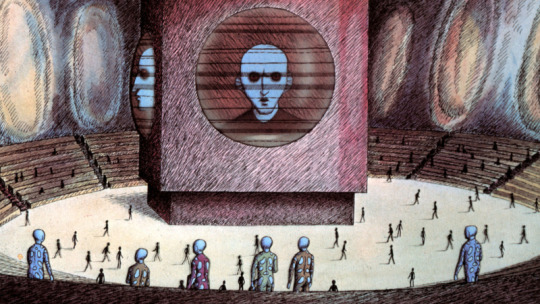
We already know that in “Fantastic Planet” the system the Draags kept the Oms in is oppressive and limit their capability of learning. They were labeled as savage and domesticated Oms. This system pretty much reflects the society we live in. The system intentionally takes out the chances of the less fortunate on learning and growing as people. It creates a division either in the movie and in our society between the “intellectuals” and the “anti-intellectuals”. What happens is that most oppressed group does not even have the eager of gaining more knowledge and that is all a consequence of the system they live in. It is all meticulously orchestrated by the system and it only makes the so called “intellectual” group of society more powerful over the other groups.
To be able to overcome their reality, the Oms had to finally come together and unite against the Draags. They had to listen to the domesticated and now more educated Oms who had more information and knowledge at the time. Without uniting, the Oms would not be able to defend themselves and attack the Draags.
Back to “Watership Down” we also see how internal conflicts inside a group or community may ruin or delay a common goal. In the movie we have characters that could fall into the label of intellectual and anti-intellectual. The protagonist of the movie, Hazel, may fall into the label of “intellectual”. He is the lead of the group and his actions were always to benefit all the band of rabbits and specially protect the small ones. Blackcherry is Hazel’s main source of knowledge and guidance. For this reason, he can also be called an “intellectual” in the group. In other hand we have Strawberry, a large rabbit but with no knowledge of how to live in the wild. He wanted to learn, although his lack of understanding of the wilderness could always affect their group.
To make a quick correlation to our society, we could divide the rabbits into a younger and older group. For example, in the younger group we have Hazel, Fiver, Strawberry and Dandelion. A group of young but very loyal and fierce rabbits. All of them with their specific positive characteristics that could be substantially important to a success of a group. In the older group we have General Woundwort, Captain Campion, and Captain Holly. Although they may be strong and experienced some of their actions may be destructive to the well being of the group. The older group often questions if the younger really knows what they are doing by their lack of experience. It is often seeing in our society too. An example is how our society keep only trusting in old candidates for important positions in our government. Why not to trust in new faces and new ideas for our society? The chances to keep repeating the problems are high. Maybe new minds and new ideas can make a lot of positive changes.
5 notes
·
View notes
Text
The Vietnam Odyssey of Oliver Stone
The soldier trained his rifle at the ground in front of the feet of the unarmed Vietnamese villager and fired away, yelling "Dance. Dance. Dance." The old man hopped from one foot to the other.
"I wanted to kill him," recalled Oliver Stone. "I hated him. I crossed over into being a monster."
The above incident is depicted in "Platoon," written and directed by Stone, a Vietnam veteran. It and the other events shown actually happened, according to Stone. He's not proud of it. But he owns up to it. "Platoon" is Oliver Stone's atonement. Moreover, it's our atonement, too. "Platoon" is the first Hollywood movie to take the redemptive power of cinema and focus it on the Vietnam War.
If you think Vietnam was John Wayne in "The Green Berets," Robert DeNiro in "The Deer Hunter" or Marlon Brando in "Apocalypse Now," think again. "Platoon" is about the bugs and rain and the jungle and the pain. It's about the unseen enemy, rice paddy stashes and gun caches in thatched-hut villages. It's about boredom, fear, friendship, rage, loyalty, humor and choices - right and wrong. Like the phrase from the comic strip Pogo, "We have met the enemy and they is us," that's what "Platoon" is all about.
Why is "Platoon" drawing critical raves, Oscar talk and large numbers at the box office? Why is it being called the most important movie about Vietnam, or perhaps the most important war movie ever made? Why, 20 years after the war's escalation, are we seeing images of a Vietnam movie on the cover of Time magazine and in the media across the nation?
Oliver Stone has a few theories. The Academy-award-winning writer ("Midnight Express") and acclaimed writer-director ("Salvador") says it took 20 years for the nation to heal its wounds, for historic perspective to settle in and allow Americans to understand Vietnam and welcome home its legacy - the Vietnam Vet. It took the Vietnam monument in Washington, D.C., and, yes, Bruce Springsteen's misunderstood "Born in the U.S." ("Got in a little hometown jam/So they put a rifle in my hand/Send me off to a foreign land/Go and kill the yellow man.") It was an educational process, Stone told a recent gathering of the media in New York.
"We thought the war was over, when in fact it was just beginning," Stone recalled of his return after 15 months with the 25th Infantry Division near the Cambodian border. Stone, wounded twice, was awarded the Bronze Star for combat gallantry and a Purple Heart with Oak Leaf Cluster. He was later transferred to the First Cavalry Division. Of his return home, he says, "There was total indifference. The war happened at 7:15 each night on the news."
Stone, 40, is a bear of a man with a boyish face. He's a very forceful individual who speaks in bursts of words which tumble forth. At the same time, the writer in him is ever observant. He seems impatient, as if he can't wait to get back to the word processor.
Ten days after his return in November 1968, Stone found himself in prison, arrested on a marijuana charge. Adjusting to civilian life for him and some 2 million other Vietnam servicemen would not be easy. But Stone managed to tough it out. What was his salvation? The cinema. Stone studied screenwriting and directing with Martin Scorsese at New York University Film School, receiving a BFA in 1971.
A Canadian firm bought a screenplay, "Seizure," and allowed him to direct the low-budget film. In 1976, Stone moved to Hollywood. Two years later, he won an Academy Award for his screenplay, "Midnight Express," which also brought him the Writers Guild of America Award. Stone also directed another low budget film, "The Hand," and co-authored the script for "Conan the Barbarian" and wrote the screenplay for "Scarface."
It was 10 years ago, during America's Bicentennial, that Stone wrote the script for "Platoon." He says every studio in Hollywood turned it down, telling him nobody wanted to see a movie about the Vietnam War. "It was considered too gruesome, too realistic."
"Platoon" is a Vietnam movie from the grunt's point of view. We see the war through the eyes of Charlie Sheen, who plays Chris, a young recruit (based on Stone), and hear it through his words in letters he writes to his grandmother back home.
The movie depicts a night watch in the jungle turned into an ambush by the North Vietnamese Army, contrasts the boozers (those who drank beer and alcohol off-duty) and the heads (those who used marijuana and other drugs back at base camp), shows a My Lai type scourging of a village by American soldiers and the conflict between a gung-ho, out-to-kill lifer Sgt. Barnes (Tom Berenger), and a mild-mannered eager-to-get-o ut-alive Sgt. Elias (Willem Dafoe). The movie does not paint a glorious picture of the American presence in Vietnam.
" 'Apocalypse Now' was about everyday life in Vietnam. It was more Joseph Conrad mythology," said Stone. " 'The Deer Hunter' was more about Pennsylvania and Meryl Streep than Vietnam."
The characters in "Platoon" are based on real people who existed in three different combat units in Vietnam. The characters and events are composites, but based on reality, Stone said. "My hypothesis was: 'What would happen if the three were in the same Platoon?' "
I asked Stone how accurate the scenes were depicting drug use in Vietnam. Many Vietnam soldiers were introduced to drugs in Vietnam and returned with drug habits. "Not in the field," said Stone. "A lot of us did it in the base camp - mostly marijuana, some heroin."
The tone of "Platoon" is not one of condemnation, but rather understanding - a knowledge that the roots of war are in all of us. Stone called war "one of the greatest highs. There's an adrenaline that flows. Life freezes down to a minute."
As you might expect, the violence in "Platoon" is graphic. But it is not gratuitous. "TV violence is obscene," said Stone of small-screen images of crashing cars, shootouts and fistfights where the participants seem to always mend by next week's episode. "It ignores reality, the real pain, shock and loss. It (violence) has to be done explicitly. Otherwise, you'll deceive the public."
Stone found a willing backer for "Platoon" in England. John Daly and Derek Gibson, owners of Hemdale Film Corp. arranged financing and brought in producer Arnold Kopelson. "Platoon" was brought in for $6 million, a low figure in today's Hollywood where a $15-million budget is average. Orion Pictures is distributing the movie.
Hemdale had produced Stone's "Salvador." Other noteworthy Hemdale movies include "The Falcon and the Snowman," "At Close Range," "River's Edge," "The Terminator" and "Hoosiers." They'll team again with Stone for his upcoming "Tom Mix and Pancho Villa.'
"Platoon" was described "as the flipside of 'Top Gun.' "
" 'Top Gun' was totally irresponsible, really," said Daly. "My friend's son, 12, saw 'Top Gun' and wanted to sign up. I said, 'Wait to sign-up until he sees 'Platoon.' "
To heighten authenticity, Stone and the producers brought the cast to the Philippines prior to shooting for two weeks of "basic training." Sheen, Berenger, Dafoe and the rest were given a shovel, told to dig their home, taken on hikes and climbs, given night guard duty and handed Army rations. Capt. Dale Dye, a retired Marine officer and Vietnam veteran, was in charge.
Dye, who has a consulting firm, Warriors Inc., which advises film-makers on military accuracy, contacted Stone, telling him, "You understand that this is as significant for the Vietnam veteran as anything is going to be. Let's do it right."
Dye was a sergeant in Vietnam where he was wounded in action three times during 31 major combat operations including the battle for Hue City and Khe Sanh during the Tet Offensive in 1968. Later, as a master sergeant he was active in the evacuation of Saigon and Phom Penh.
" 'Apocalypse Now' and 'The Deer Hunter' are war films," said Dye, "but have nothing to do with Vietnam. They are allegorical in nature, but don't reflect the agony and ecstasy of young men who went to fight in that very difficult war."
Dye now has no illusions about war: "I went into it with grand delusions of flashing sabers and lovely ladies on my arm. When I got down to the mud and the blood, I found that to be hollow."
Stone was similarly gung-ho. A son of a stockbroker who met his wife in Paris during World War II, Stone attended the Hill School, Pottstown, before entertaining Yale University. He studied there for one year. In 1965, he got a job with the Free Pacific Institute, teaching Vietnamese-Chinese students in the Cholon district of Saigon. Then, he got a job on an American merchant ship. Two years later, at 21, he was back in Vietnam.
Has "Platoon" helped Stone put Vietnam behind him? Yes, he says. "I was totally warped and twisted by Vietnam. I got rid of all my demons."
-Paul Willistein, “The Vietnam Odyssey of Oliver Stone,” The Morning Call, Feb 1 1987 [x]
2 notes
·
View notes
Text
#OTD in 1919 – Official founding of ‘The Squad’, an IRA counter-intelligence and assassination squad.
The Squad was officially established at 46 Rutland Square on the 19 September 1919. Although at the time it had been in operation for two months and had already carried out two killings. Members were paid £4.10s per week. Officially the unit was a part of the Dublin Brigade under Dick McKee from Finglas, but they were separate from the Battalion structure and directly under the command of…
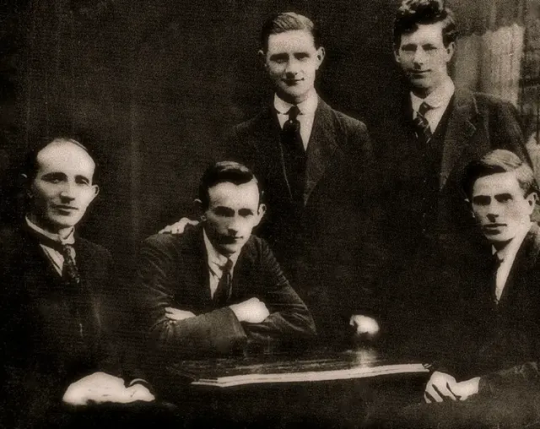
View On WordPress
#Ben Barrett#Bill Stapleton#British Intelligence#Cairo Gang#Detective Sergeant &039;The Dog&039; Smith#Dublin#England#Guerrilla warfare#IRA#Ireland#James Conroy#Jim Slattery#Joe Leonard#Michael Collins#Mick McDonnell#Paddy Daly#Pat McCrea#Patrick Buckley#Sean Doyle#Sinn Fein#Sir Henry Wilson#The Squad#The Twelve Apostles
6 notes
·
View notes
Text
Hello.
Northern Ireland (NI) Comedian of the Year is a brand new competition established to recognise and reward the best comedic talent in Northern Ireland.
Set up by comedian William Thompson in partnership with some of NI’s most experienced comedy promoters, the competition aims to seek out the best talent Northern Ireland has to offer, offering the prize of £250 and the opportunity to headline shows across the country, in addition to mentoring and support from a network of established comedians, comedy promoters and producers.
We’re here to find the best undiscovered or overlooked talent, and the competition is open to applications from anyone from or based in Northern Ireland not currently performing as their main source of income. Whether you’re an experienced act or just starting out, you can enter.*
Competition heats will take place from mid-March to the end of April across venues in Northern Ireland, with the grand final taking place in Accidental Theatre on Saturday 23rd May. Heat winners and the ultimate winner of the competition will be determined by votes from the audience and a panel of judges.
Applications are open from Fri 21st February, closing at midnight on Monday 9th March 2020. To apply, fill in the application form below. https://bit.ly/2wtlXBA *Applicants must be 18 years or over to enter.
Organising committee: William Thompson Peter E Davidson Sarah Firby Alan Irwin Paddy McGaughey Luke McGibbon Rory McSwiggan Darren Matthews Paul Mone Graeme Watson
Participating Comedy Clubs: Kill Your Darlings (Black Box, Belfast) Chicken Box Comedy (Benningans, Derry) McCooey’s Comedy Club (McCooey’s, Newry) Monday Night Comedy at the Pavilion (Pavilion Bar, Belfast) Coven Comedy Club (Ulster Sports Club, Belfast) Laughs @the Loft (Brickworks, Derry) The Green Room Open Mic at Dalys (Daly’s Bar, Omagh) The Front Page Comedy Club (The Front Page, Ballymena) Accidental Comedy Club (Accidental Theatre, Belfast) The Infinite Jest/Cathedral Quarter Comedy Club
1 note
·
View note
Text
I would love to get more roleplays going on here. IM me if you are interested. Here is a list of my muses under the read more.
Characters in bold are a sideblog and are linked to it
Mamma Mia
Donna Sheridan - FC: Meryl Streep, Mamie Gummer, Lily James
Sam Carmicheal - FC: Pierce Brosnan
Sophie Sheridan - FC: Amanda Seyfried
Sky Rymand - FC: Dominic Cooper
Doctor Who
Tenth Doctor - FC: David Tennant
Thirteenth Doctor - FC: Jodie Whittaker
Rose Tyler - FC: Billie Piper
Jenny - FC: Georgia Tennant
Astrid Peth - FC: Kylie Minogue
Harry Sullivan - FC: Ian Marter
Sarah Jane Smith - FC: Elisabeth Sladen
John Smith (TenToo) - FC: David Tennant
Glee
Emma Pillsbury-Schuester - FC: Jayma Mays
Will Schuester - FC: Matthew Morrison
Carol Hudson-Hummel - FC: Romy Rosemont
Finn Hudson - FC: Cory Monteith
Greys Anatomy
Carolyn Shepherd - FC: Tyne Daly
Derek Shepherd - FC: Patrick Dempsey
Meredith Grey - FC: Ellen Pompeo
Nathan Riggs - FC: Martin Henderson
Andrew De Luca: FC: Giacamo Gianniotti
Mark Sloan - FC: Eric Dane
Amelia Shepherd - FC: Caterina Scorsone
Private Practice
Pete Wilder - FC: Tim Daly
Lucas Wilder - FC: Eion Macken
Station 19
Lucas Ripley - FC: Brett Tucker
Game Of Thrones
Bronn - FC: Jerome Flynn
Lilliyan - FC: Lily James - OC character
Jaime Lannister - FC: Nikolaj Coster - Waldau
Broadchurch
Alec Hardy - FC: David Tennant
Ellie Miller - FC: Olivia Coleman
Neighbours
Mark Brennan - FC: Scott McGregor
Mary Poppins Returns
Topsy - FC: Meryl Streep
Madam Secretary
Henry McCord - FC: Tim Daly
London’s Burning
Nick Georgiadis - FC: Andrew Kazamia
Soldier Soldier
Paddy Garvey - FC: Jerome Flynn
Holby City
Zubin Khan - FC: Art Malik
Coronation Street
Ciaran McCarthy - FC: Keith Duffy
The Devil Wears Prada
Miranda Priestly
Titanic
Rose Dewitt Bukater - FC: Kate Winslet
2 notes
·
View notes
Text
ADIFF 2018 Main Programme Announcement
Bill Pullman, Vanessa Redgrave, Paul Schrader, Cillian Murphy, Barry Keoghan, Lance Daly, Nora Twomey, Paddy Considine, Sandy Powell, and Lynne Ramsay lead an exquisite line-up of Irish and International film talent coming to the Audi Dublin International Film Festival 2018 The Audi Dublin International Film Festival brings the world’s best films to Dublin in its spectacular 16th edition that…
View On WordPress
#adiff#audi#Barry Keoghan#Bill Pullman#Cillian Murphy#dublin#irishfilm#Lance Daly#Lynne Ramsay#Movies#Nora Twomey#Paddy Considine#Paul Schrader#Sandy Powell#Vanessa Redgrave
0 notes
Text
where to watch Munster Vs Ulster Rugby Game for New Year's Day clash
New Post has been published on https://thedailyrugby.com/munster-vs-ulster-rugby-game-new-years-day-clash/
The Daily Rugby
https://thedailyrugby.com/munster-vs-ulster-rugby-game-new-years-day-clash/
where to watch Munster Vs Ulster Rugby Game for New Year's Day clash
Here is our full guide to 2023 Munster Vs Ulster Rugby live streaming or watching it on TV. How to live stream and watch United Rugby Championship. Munster face Ulster at the Kingspan Stadium in Belfast for a New Year’s Day InterPro clash. On the injury front following a St Stephen’s Day derby with Leinster, Graham Rowntree’s side were left in 11th place on the URC table.
This Sunday, Ulster hosts again after Munster visited the Kingspan Stadium twice last season – winning in Belfast in the penultimate regular season round of the URC, before losing out to Dan McFarland’s side in the quarterfinals at the beginning of June.
Here’s what you need to know ahead of the New Year’s Day InterPro clash:
Venue? Kingspan Stadium. Also known as the Ravenhill Stadium, the Belfast venue is the home of Ulster Rugby.
Time? Kick-off is at 5.15 pm.
Read More: Munster Development Side To Face Ireland U20s
How can I watch Munster Vs Ulster Rugby Game?
The match will be shown live on the daily Rugby. You can also access it on Premier Sports, Viaplay, SuperSport, Discovery + and URC TV.
Jack O’Donoghue captains Munster with six personnel changes and two positional switches to the side that faced Leinster on St Stephen’s Day.
The team is:
Mike Haley, Shane Daly, Antoine Frisch, Malakai Fekitoa, Keith Earls, Jack Crowley, Paddy Patterson, Dave Kilcoyne, Niall Scannell, Roman Salanoa, Jean Kleyn, Kiran McDonald, Jack O’Donoghue (C), Alex Kendellen, Gavin Coombes.
Replacements: Scott Buckley, Josh Wycherley, Stephen Archer, Cian Hurley, Jack O’Sullivan, Conor Murray, Ben Healy, Patrick Campbell.
Mike Haley, Malakai Fekitoa and Paddy Patterson come into the backline with Shane Daly moving from full-back to wing and Jack Crowley moving from inside center to out-half.
Here is your Munster team to face Ulster on New Year’s Day 🙌#ULSvMUN #SUAF 🔴 pic.twitter.com/G7djVpn3ss
— Munster Rugby (@Munsterrugby) December 30, 2022
Weekend Rugby Schedule 2022/2023
Saturday, December 31
URC
Zebre v Benetton, 12.30pm, Premier Sports
Sharks v Bulls, 2.45pm, Premier Sports
Stormers v Lions, 5pm, Premier Sports
Gallagher Premiership
Saracens v Exeter, 3pm, BT Sport
Gloucester v London Irish, 3pm
Bath v Newcastle, 3pm
Sunday, January 1
URC
Cardiff v Ospreys, 3pm, BBC Two Wales and Premier Sports
Scarlets v Dragons, 5.15pm, Premier Sports
Ulster v Munster, 5.15pm, Premier Sports
Leinster v Connacht, 7.35pm, Premier Sports
Gallagher Premiership
Northampton Saints v Harlequins, 3pm
where to watch Munster Vs Ulster Rugby Game for New Year’s Day clash
by Brenda Reed on December 30, 2022 at 5:25 pm
Here is our full guide to 2023 Munster Vs Ulster Rugby live streaming or watching it on TV. How to live stream and watch United Rugby Championship. Munster face Ulster at the Kingspan Stadium in Belfast for a New Year’s Day InterPro clash. On the injury front following a St Stephen’s Day derby with Leinster,
Lock Paul Tito as Blues forwards coach for the 2023 Super Rugby season.
by Brenda Reed on December 29, 2022 at 6:17 pm
The Blues have bolstered their backroom staff by appointing former Hurricanes and Maori All Blacks lock Paul Tito as their forwards coach for the 2023 Super Rugby Pacific season. The 44-year-old will join the Auckland-based franchise after spending much of the last four years getting coaching experience overseas and joins the Blues as a replacement
Tommy Reffell has been named among the best players Rugby in the UK
by debrambuhl on December 29, 2022 at 3:41 pm
Ospreys coach Toby Booth says he agreed with referee Craig Evans’ decisions during the Boxing Day derby against the Scarlets. Tonight’s rugby news as five Wales players named in UK’s top 30 and Ospreys disagree with Scarlets over controversy. Scarlets lock Tomas Lezana was sent off in the fifth minute of the festive derby for
1 note
·
View note